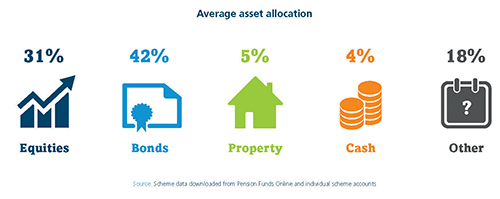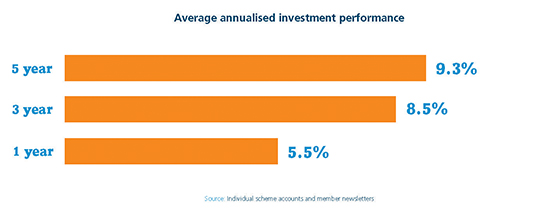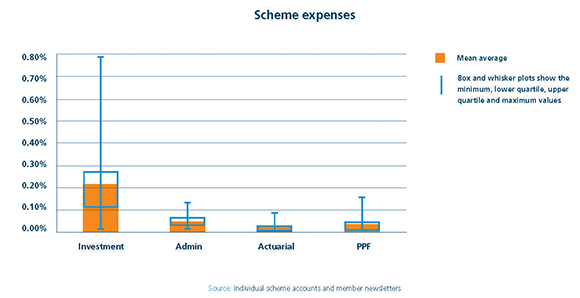From the blog: The future for final salary pension provision looks bleak. So goes the rhetoric: benefit rules, tax changes, EU legislation, the Pension Protection Fund levy, accounting rules and more – each has been blamed for increasing costs and hammering that final nail in the defined benefit coffin.
Yet significant legacy liabilities remain and need to be proactively managed. Many schemes still stand, proudly embracing this challenge.
Trustees and employers are investigating innovative solutions to the entwined issues of funding, investment and employer covenant. The trailblazers of these new frontiers are often the big schemes.
To investigate the basic features of these schemes, Barnett Waddingham surveyed 170 private sector DB schemes with assets of more than £1bn.
As pensioners become an increasing proportion of a scheme’s membership, there is a trend to move away from growth assets (such as equities) and into those which better match pension payments.
Big schemes are no exception….

Source: Barnett Waddingham
Our analysis also showed a decreasing proportion allocated to ‘other’ assets at 18 per cent, based on data available to October 31 2014, down from 22 per cent the previous year and 25 per cent the year before that.
This category includes alternative assets such as derivatives and hedge funds, but also funds where a split between asset types could not be easily determined.
The search for investment returns becomes tougher…
Gilts and corporate bonds appeared to offer very little. Schemes may have struggled to achieve the returns assumed in their funding plan in that year.

Source: Barnett Waddingham
For schemes undertaking valuations in 2013-14, investment performance over a three-year period may have been better than expected.
But schemes now beginning the valuation process are not likely to see such a rosy picture.
Trustees and sponsoring employers will have to think long and hard about their investment strategy and its prospects for returns.
Investment fees dwarf the other costs of running a scheme…

Source: Barnett Waddingham
Costs and charges hit the headlines in a big way this year.
This, and the challenging economic environment, has encouraged those involved with DB schemes to pay closer attention to the fees they pay and the value for money they get.
The survey shows big schemes pay on average around 0.2 per cent of assets a year in investment management fees. For a £1bn scheme, this equates to £2m a year.
Despite big schemes being at a significant advantage in negotiating fees due to the scale involved, annual investment fees ranged up to around 0.8 per cent of assets.
These may be schemes that employ a greater degree of active management, or an unusual investment strategy, but nonetheless schemes should carefully monitor costs to better control them.
The PPF levy is another big cost for schemes.
The average levy was around £3.2m (up from £2.2m the previous year), or around 0.03 per cent of scheme assets.
Given the significant expense, big schemes are likely to pay for advice to ensure they are paying the correct levy.
Smaller schemes should make sure they are not paying more than their fair share.
Nick Griggs is a partner and head of corporate consulting at Barnett Waddingham






















